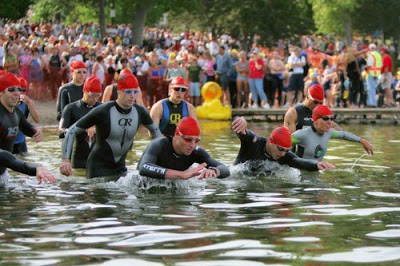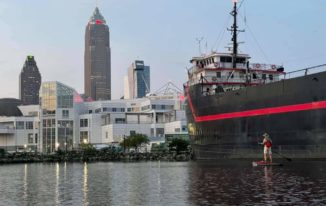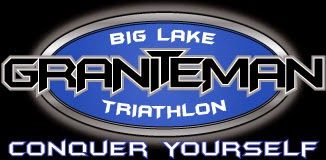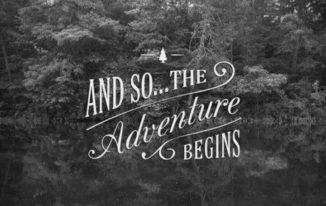 Buffalo, MN is about 40-miles northwest of downtown Minneapolis off MN-55 and MN-25. Buffalo got its start in the 1800s as a resort town for wealthy day-trippers from the Minneapolis-St. Paul metro area. There were several resorts located around Lake Pulaski, one of the two largest lakes in Buffalo. Visitors would take a train from the Twin Cities and arrive in Buffalo only an hour later.
Buffalo, MN is about 40-miles northwest of downtown Minneapolis off MN-55 and MN-25. Buffalo got its start in the 1800s as a resort town for wealthy day-trippers from the Minneapolis-St. Paul metro area. There were several resorts located around Lake Pulaski, one of the two largest lakes in Buffalo. Visitors would take a train from the Twin Cities and arrive in Buffalo only an hour later.
The Buffalo Triathlon, now in its 6th year, is second in the state only to the Lifetime Fitness Triathlon in the number of participants. This early season race is a sign that the outdoor triathlon season is now open in the state of Minnesota. The triathlon kicks off Buffalo Days, a week-long celebration featuring a carnival, medallion hunt, royalty coronation, street dance, fireworks display, and much more.
For the last several years Race Director Brett Oden has brought in professional triathletes to race along side the amateurs and/or first timers. Participants get to meet them at packet pick-up, rack their bikes in the same area, and stand along side of them at the swim start like they were just another participant, which is really cool. Previous years have seen the likes of Chris Legh, Natascha Badmann, Becky Lavelle, and Brian Lavelle on race day. This year will be no exception with reigning Ironman 70.3 World Champion Terenzo Bozzone participating in the race.
Pre-Race Preparations
We arrived in Buffalo about 06:20 AM after the 90-min drive from Cottage Grove. The sun had been up for about an hour although it was nowhere to be seen. The bank thermometer just behind where we parked flashed 48 F. A light mist fell as I unstrapped the bike from the car and grabbed my transition bag. I headed off to get setup and left Charlene with the car as Alexandra was still sleeping in the back seat. After I put my bike in the rack I went and picked up my race packet. This is an exceptionally run event. There is a very good number of volunteers which make the whole day better for all of the participants. I made every effort to thank as many of them as I could throughout the day. Without their support these types of events would never happen.
As I finished laying out my bike and run gear it became even more obvious that it was going to be a chilly day out on the bike. I laid out my bike jacket and gloves, still not sure if I’d wear them later. The mandatory pre-race briefing started at 08:15 AM. Terenzo Bozzone was introduced along with a local racer who is battling Stage IV melanoma. After the athlete’s prayer and national anthem I headed back to transition to get ready for the swim. Lucky for me, Charlene was just outside of the transition area to help me get my wetsuit zipped. I have not figured out how to get that thing on by myself. I headed down to the beach to get in the water for a quick warm-up.
The Swim
I was in wave 7 of 8 for the Olympic distance race. There were 25 waves for all events. The race was scheduled to start at 09:00 AM with 2 minutes between waves. I was shaking, almost uncontrollably, as I waited for my wave to be called. It was much warmer in the water than it was standing on the beach. The water temperature was announced as 70 F but I’d guess it was slightly cooler than that. But either way it was about 20 degrees warmer than the air temp.
When they announced my wave I made my way to the water’s edge and readied myself for the start. The water level of Buffalo Lake (like most area lakes) was down significantly, so when the horn sounded I did several more dolphins than normal before finally settling in to my stroke. The 1500 M (0.93-mile) swim course is a rectangular shaped counter-clockwise single loop. Counter-clockwise is ideal for me since I naturally breathe to my left which makes sighting the buoys (big giant inflatable yellow duckies) much easier. I ran into significant traffic from the previous waves prior to making the first corner. Open water swimming in a crowd takes some getting use to (a very funny triathlon swim start training video). It’s hard to describe, but it always reminds me of a spillway full of carp fighting for scraps of bread thrown in by the passerbys. The swim is by far my strength. I did not push too hard today but felt good about the effort. Coming into shore I always try to swim until my hands scrape the bottom. With the water level being down I was still 25 or 30 yards from shore when I stood up to run the rest of the way in. I was able to have my wetsuit down to my waist before exiting the water and making my way into T1.
T1
My goal today was to shave about 1-minute off last year’s T1 time. I had recently watched a training video on youtube on how to get out of your wetsuit faster. The concept basically was to peel it down to just below your knees before stepping on it and pulling your opposite leg up to get it to your ankles and then rip your feet out one at a time. It basically worked but nearly caused a calf cramp. Putting on the long sleeve pullover wind/rain jacket, which turned out to be well worth the extra time, cost me 30 or 40 seconds. I opted not to wear the gloves. The result was adding 28 seconds to last year’s T1 time. Transitions are definitely an area that I need to make improvements.
The Bike
The 40 K (24.85-mile) bike course is primarily a single loop. There is a short out and back section starting at about mile 12 that concludes at about mile 16. The course is moderately hilly but nothing too steep or long. The hills are more rolling in nature. The roads were wet, there were periods of misting, and the wind seemed to be in my face more than it was at my back. I purchased a new bike earlier this year and felt that I needed to have a good showing to justify the purchase. Probably not the best motivation on a day that was less than ideal for setting personal bests. The ride overall was uneventful other than the near miss with a fellow rider with about 3 miles to go. He was waving at one of the leaders on the run and nearly took me out as he swerved from the right to the left side of the road (where is the horn when you need it?). In the end my bike split was 6 seconds slower than last year’s time. There were a couple of bright spots in the effort; my average heart rate was down nearly 10-beats per minute, and I averaged a cadence of 97 rpm; two things that will be significant later this year in Madison.
T2
Again the goal was to improve from last year. I had targeted about 30 seconds which I thought I could get from better organization of my run gear layout. Getting the long sleeve pullover off didn’t help, but in the end I managed an 18 second improvement. A small accomplishment but I’ll take it on a day that was proving to be tough to yield any gains.
The Run
The run is an out and back with an extra little ½ mile out and back branch between mile 3 and 4. The first half of the run is a gradual climb with a steeper incline just before mile 3 at the cemetery turnaround, which means coming back is basically down hill. I had pebbles in my shoes (turned out to be in my socks) which were annoying, a slight ache in my lower quads, and that almost-cramp feeling in my calves. I pushed as hard as I thought I could without causing further issues. My Garmin did not start when I thought it did so I did not get any data for the first mile. But as I came into the finish I knew any overall improvement for the day was going to come from this run.
The Result
Although it did not end up being the day I had hoped for, there were a few bright moments (and they did not come from the sun poking through the clouds). All of the 6 minute improvement in my overall time came on the run. I’m no Dick Beardsley (nor will I ever be) but I’m happy with the progress I’ve made with my run. The run had been my weakest discipline but appears to be climbing out of the cellar. Additionally, based on my heart rate data, I did not have to work nearly as hard as in previous years, indicating that my training is heading in the right direction. So I’ll take what I’ve learned and see if I can apply it and make some additional improvements for the rest of this season.
One final bright spot, with the help of Gary and Walt I will be making a $140 donation to the Brain Aneurysm Foundation in memory of our friend Mike.



